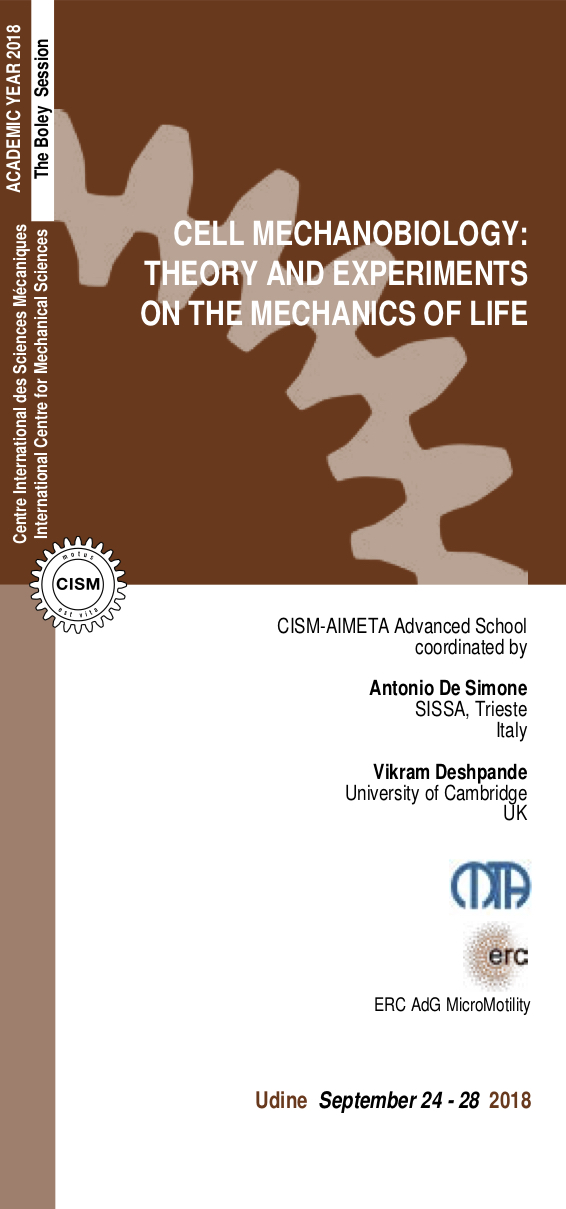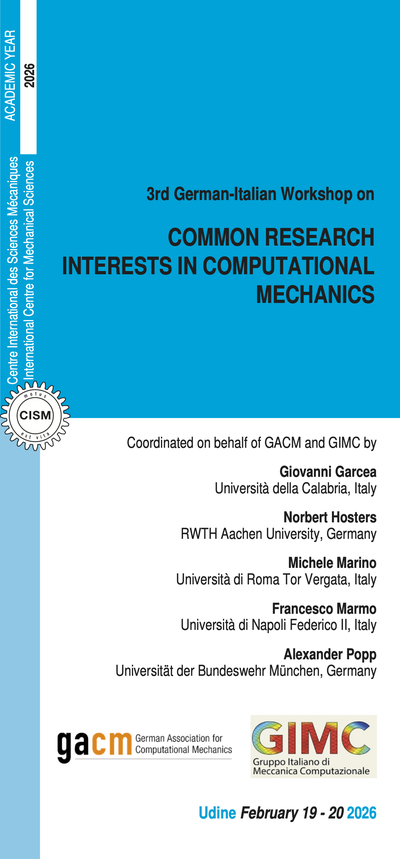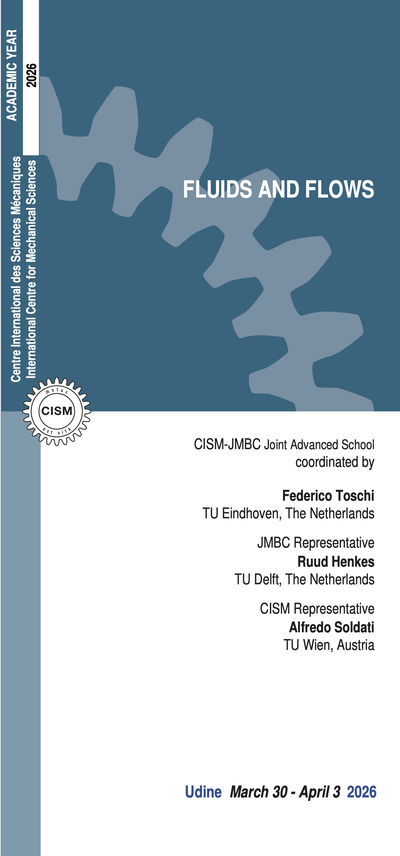D. Discher et al.: Tissue cells feel and respond to the stiffness of their substrate, Science 310 (2005), 1139-1143.
U.S. Schwarz and S.A. Safran: Physics of adherent cells. Rev. Mod. Phys., 85 (2013), 1327-1381.
R. Phillips et al.: Physical Biology of the Cell, Garland Science (2008).
D. Fletcher and J. Theriot: An introduction to cell motility for the physical scientist, Phys. Biol. 1 (2004), T1-T10.
P. Roca-Cusachs, V. Conte, and X. Trepat: Quantifying forces in cell biology Nature Cell Biology 19 (2017), 742-751.
M. Arroyo and A. DeSimone: Shape control of active surfaces inspired by the movement of euglenids. J Mech Phys Solids 62 (2014), 99-112.
J. Eyckmans et al.: A Hitchhiker’s Guide to Mechanobiology, Developmental Cell 21 (2011), 35-47
V.S. Deshpande, R.M. McMeeking, and A.G. Evans: A bio-chemo-mechanical model for cell contractility, Proceedings of the National Academy of Sciences, USA 103 (2006), 14015-14020.
P. Recho et al.: Growth, collapse and stalling in a mechanical model for neurite motility, 7. Phys Rev E 93 (2016), 032410.
J.M. Aznar et al.: Collective cell durotaxis emerges from long-range intercellular force transmission, Science 353 (2016), 1157-1161.
6 lectures on: Introduction to experimental assessment and manipulation of cells. Mechanical characterisation of adherent and non-adherent cells; The mechanosome and mechanotransduction; Cell-generated forces in 2D and 3D; Manipulating mechano-sensitive responses; Cell-cell and cell-matrix interactions; Cell mechanics in health and disease.
5 lectures on: Cytoskeletal and cell mechanics. Overview of the cytoskeleton; Cell energetics; An introduction to statistical mechanics; Cell entropy and statistical mechanics of single cells; Mechano-sensitive responses of cells: (I) Mechanical cues; (II) Topological and chemical cues.
2 lectures on: Shape control in unicellular swimmers. Motility in euglenids: flagellar propulsion vs motility by shape change (metaboly). Shape programming in artificial bio-inspired systems.
Opening lecture: “Matrix stiffness, Cytoskeletal tension, and Nuclear viscosity: Correlations and Mechanisms in Tissues”
6 lectures on: The role of cell and matrix mechanics in migration. The mechanics of single and collective cell migration; Cell-matrix adhesion and traction stresses; Microfluidic-based experiments for 3D migration studies; Individual 3D migration: from tumor to healthy cells; Collective cell migration: from cell sheet migration to angiogenesis; Tissue engineering scaffold design: guiding cell movement.
5 lectures on: Cell contractility and adhesion. Acto-myosin stress fibres and cell adhesion; Biochemomechanical mechanisms of contractility, adhesion and signaling; Model of contractility of the cell and simulating in vitro behavior; Modeling in vivo behavior, smooth muscle cells, controlling the fate of cells.
6 lectures on: Physical models of cell crawling. Thermodynamic foundations of active gel physics; Protrusion based motility; Contraction based motility; Mechanisms of cell self-polarization; Optimal velocity of cell crawling; Optimal efficiency of cell crawling.
Closing lecture: “Mechanobiology of the actomyosin cytoskeleton: dynamics, regulation, sensing, adaptation, repair and memory”
* Italian VAT is 22%.





